Yearning to uncover the mysterious collective noun for slugs? Dive into the delightful union of language and nature to satiate your curiosity!
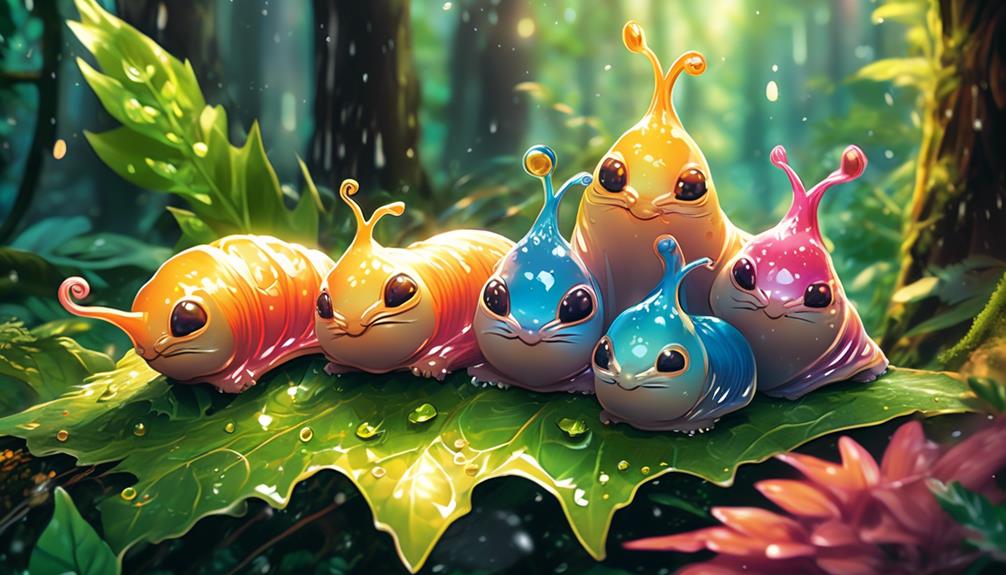
Collective Noun for Slugs
Imagine you’re walking in your garden after a light rain and notice a surprising number of slugs congregating on a damp patch of soil. You’re struck with a sudden curiosity – what do you call a group of slugs? It’s not something you typically ponder, yet the English language has a rather unusual, even quirky, array of collective nouns to describe groups of animals, and slugs are no exception.
As you stand there, intrigued by the slimy spectacle before you, you realize there’s a whole world of language and biology intermingling in ways you’ve never considered before. What’s the term you’re looking for? Well, let’s move further into this fascinating intersection of language and nature to find out.
Key Takeaways
- Collective nouns categorize and give context to groups of people, animals, or things.
- The collective noun for a group of slugs is a ‘cornucopia’, signifying abundance.
- Slugs play a key role in the ecosystem by recycling nutrients through their diet.
- Understanding and using collective nouns allows for concise and effective communication about complex ecological interactions and behaviors.
Understanding Collective Nouns
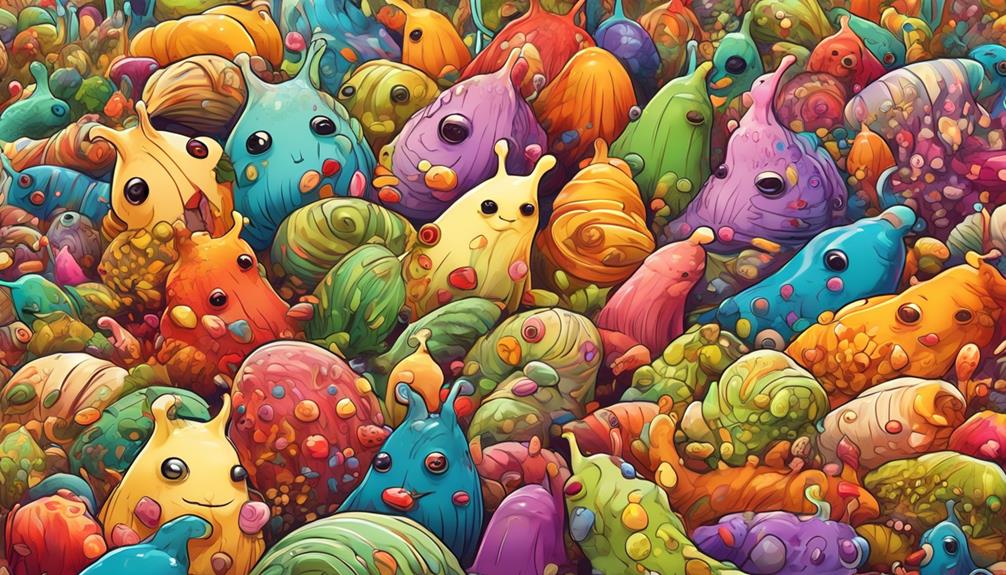
Before diving into the specific collective noun for slugs, it’s crucial to grasp the concept of collective nouns and their unique role in our language.
Collective nouns, in essence, are words used to describe a group or collection of people, animals, or things. They’re not just for counting or quantifying; they’re for categorizing and giving context.
Take ‘team’ for instance. It’s not about the number of people, but the shared purpose that unifies them. Similarly, ‘flock’ doesn’t just mean a lot of birds; it’s about their communal behavior and interaction. Collective nouns are fascinating in that they often encapsulate the essence of the group they represent, often in a poetic or whimsical way.
When it comes to animals, the collective nouns often reflect an attribute of the species. A ‘pride’ of lions paints a picture of majesty, while a ‘murder’ of crows evokes a darker, more ominous image. Understanding these nuances is vital when exploring the collective nouns for different creatures.
The Biology of Slugs
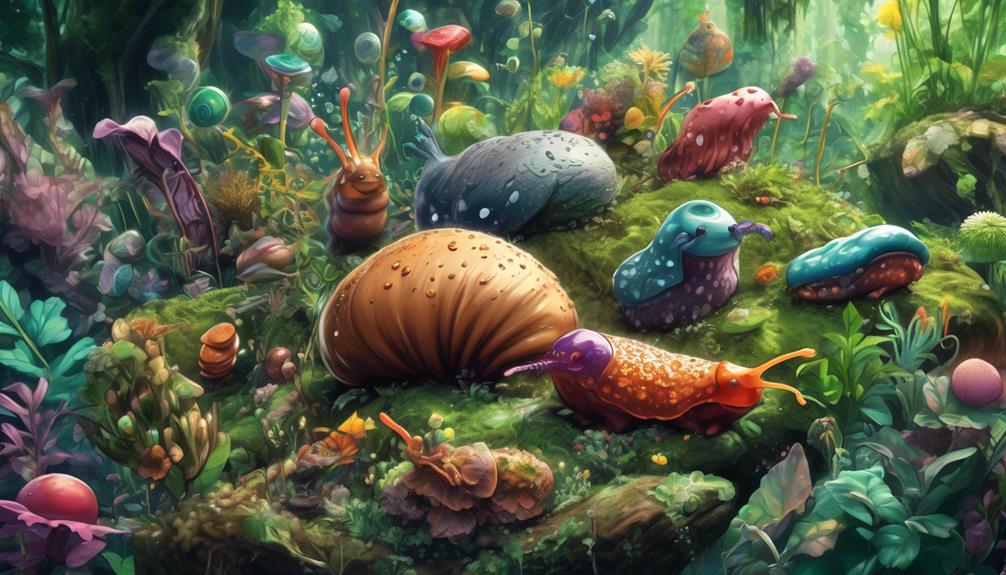
Diving into the world of slugs, you’ll find an incredible diversity of over 1,000 species, each sporting unique biological features, from their slimy bodies to their fascinating reproduction methods. Their slimy bodies, covered in mucus, serve multiple purposes. It aids in movement, retains moisture, and even discourages predators.
There’s more to a slug than just a slimy exterior. They’re gastropods, which means they’re part of the same family as snails. Unlike their shelled relatives, slugs have adapted to life without a shell, which gives them greater flexibility and mobility.
One of the most intriguing aspects of slugs is their unusual reproductive habits. They’re hermaphrodites, possessing both male and female reproductive organs. Although they can self-fertilize, they usually mate with another slug. After mating, each slug lays hundreds of tiny, pearl-like eggs in damp soil or under leaves.
You’d be amazed to learn about their diet too. Slugs aren’t picky eaters. They’ll munch on everything from dead leaves and fungi to decaying animal matter, playing a key role in the ecosystem by recycling nutrients. So, while they mightn’t be the most charming creatures, slugs are biologically fascinating.
Intriguing Slug Behavior
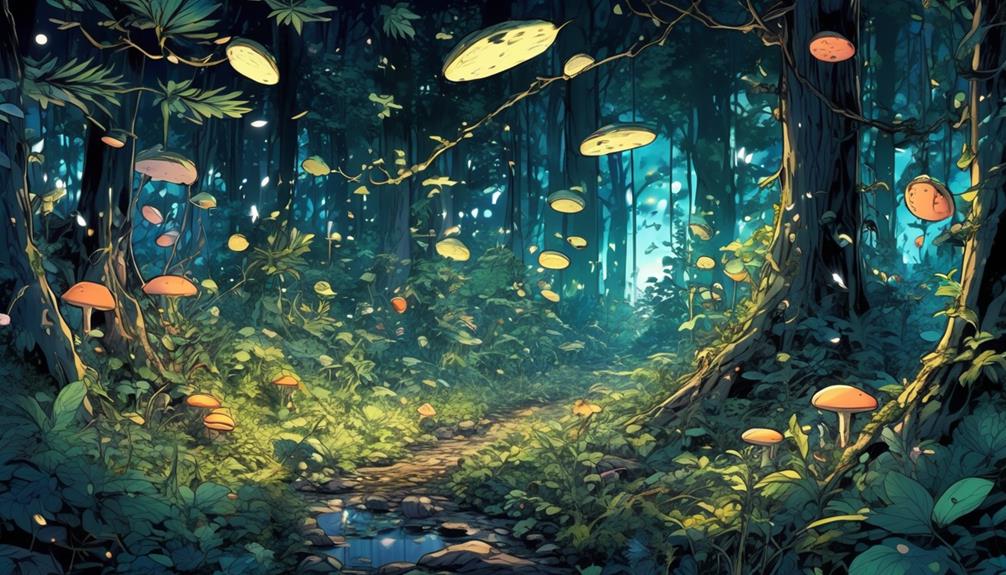
Let’s explore the intriguing behaviors of slugs, which range from their unique nocturnal activity patterns to their remarkable homing abilities. You’ll notice that slugs are primarily nocturnal creatures. They’ve developed this pattern to avoid their many predators and the harsh daytime heat, which can dehydrate their moist bodies.
You must also marvel at their impressive homing abilities. Slugs can navigate back to a specific location over considerable distances. They use a combination of tactile and chemical cues present in their slime trail to achieve this, showing remarkable spatial memory for such a simple creature.
Ever noticed how slugs seem to disappear after a rainstorm? They’re actually capable of estivation – a form of dormancy where they seal themselves in a protective layer of mucus to avoid dehydration. This is especially crucial during periods of drought.
Lastly, let’s delve into their unique mating behavior. Most slugs are hermaphrodites, possessing both male and female reproductive organs. Their courtship rituals are complex and often involve elaborate dances before the exchange of sperm.
In exploring these behaviors, you gain a greater appreciation for these often under-appreciated creatures. Despite their slow, slimy exterior, slugs are marvels of adaptation and survival.
The Unusual Group Name for Slugs
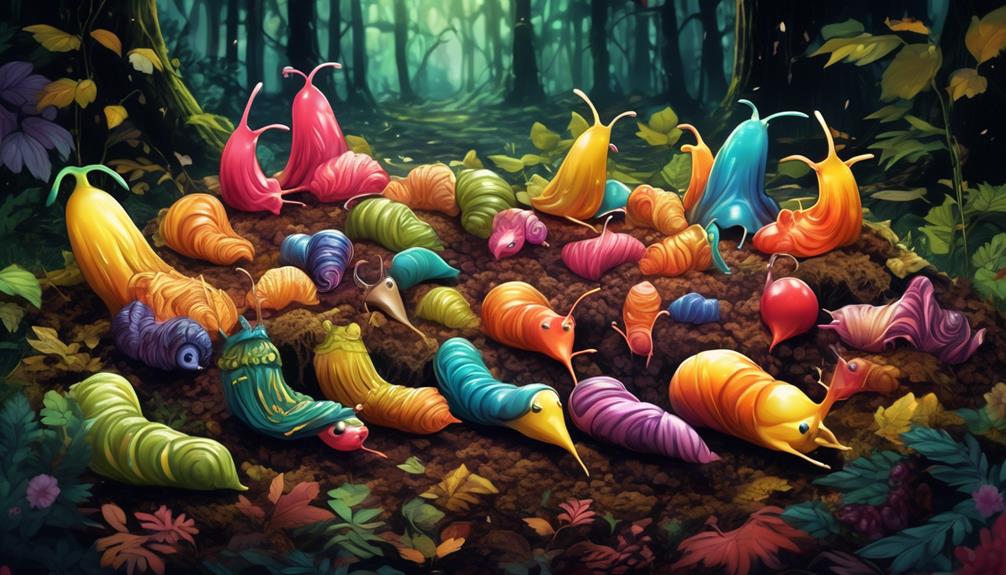
Moving on to another intriguing aspect, have you ever wondered what a group of slugs is called? This may sound like an unusual question, but in the realm of zoology, it’s quite relevant.
The collective noun for a group of slugs is a ‘cornucopia’. It’s a term that’s not commonly known, but it’s scientifically accurate.
The term ‘cornucopia’ is derived from two Latin words: ‘cornu’ meaning ‘horn’, and ‘copia’ meaning ‘plenty’. In mythology, a cornucopia is a horn-shaped container overflowing with produce, signifying abundance. By extension, when you see a ‘cornucopia’ of slugs, you’re witnessing a plethora of these gastropods.
This choice of term is interesting, as it conveys the idea of an abundance of slugs, which is often the case in wet and humid environments where they thrive. This name isn’t just a lexical quirk, it’s a small but significant reflection of the slug’s ecological role.
Slugs are decomposers, breaking down organic matter and returning nutrients to the soil. A cornucopia of slugs, therefore, symbolizes an active and healthy ecosystem.
Fascinating, isn’t it?
Why Collective Nouns Matter
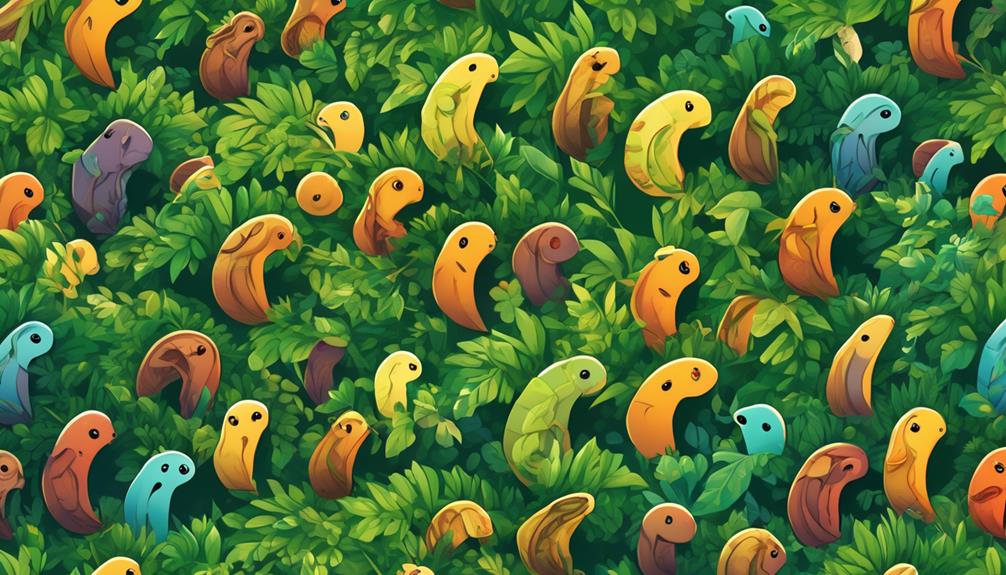
While the concept of a ‘cornucopia’ of slugs may seem like just an intriguing piece of trivia, it actually underscores the importance of collective nouns in our understanding of animal behavior and ecology. Collective nouns aren’t just linguistic curiosities; they’re tools that help us categorize and comprehend the natural world.
When you use the term ‘cornucopia’ to refer to a group of slugs, you’re not just being linguistically clever. You’re referencing a specific behavior of these creatures. Slugs often congregate in large numbers, forming what can be described as a ‘cornucopia’. This aggregation can have significant implications for the local ecosystem, affecting factors such as soil quality, plant growth, and predator-prey dynamics.
Understanding these collective behaviors requires us to have the language to describe them. Without collective nouns, we wouldn’t be able to talk about these phenomena in a concise, effective way. They provide us with a shorthand for complex ecological interactions and behaviors.
Conclusion
So, you’ve dug into the fascinating world of slugs and their behavior. You’ve discovered their collective noun is an ‘cornucopia.’ Interesting, isn’t it?
Understanding collective nouns like this isn’t just trivia. It’s a vital part of appreciating the richness of language and the diversity of our natural world.
Keep this knowledge in your back pocket – it’s sure to come in handy or simply make for an engaging conversation starter!




Sign up